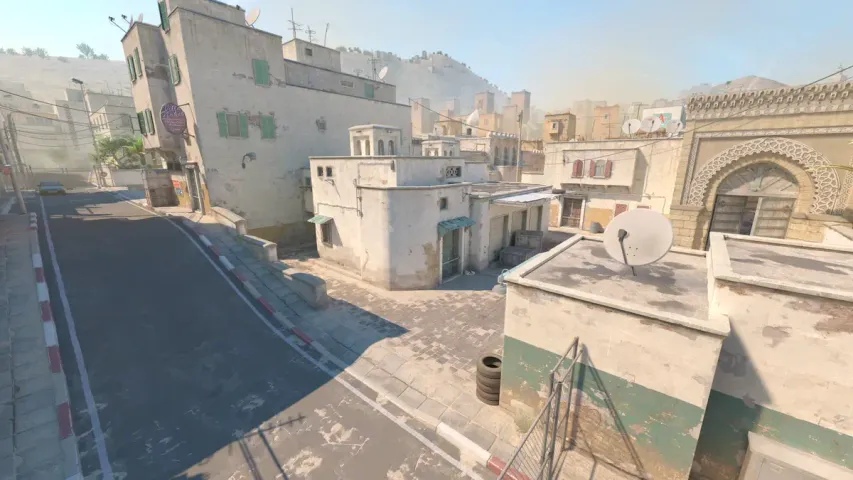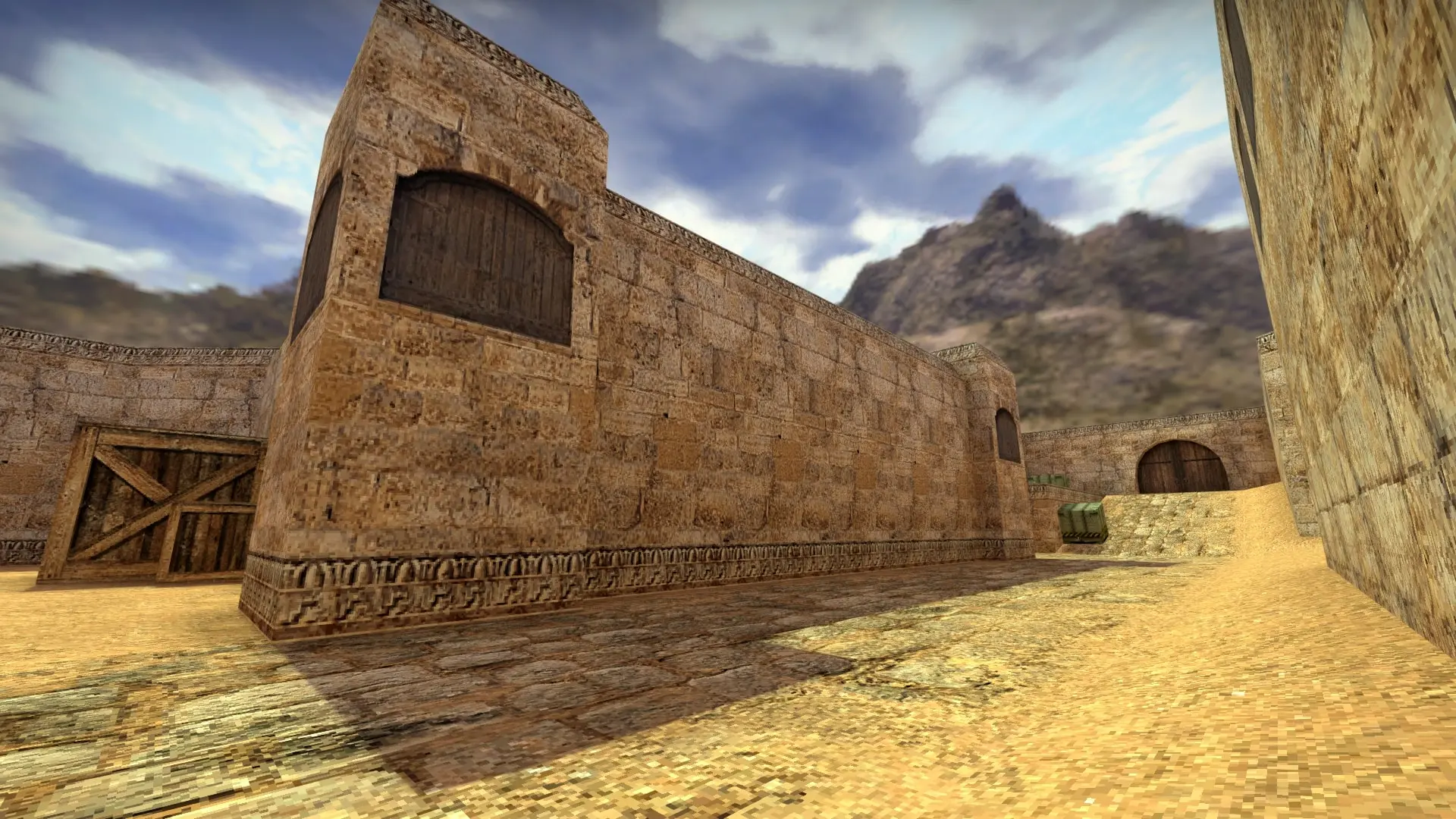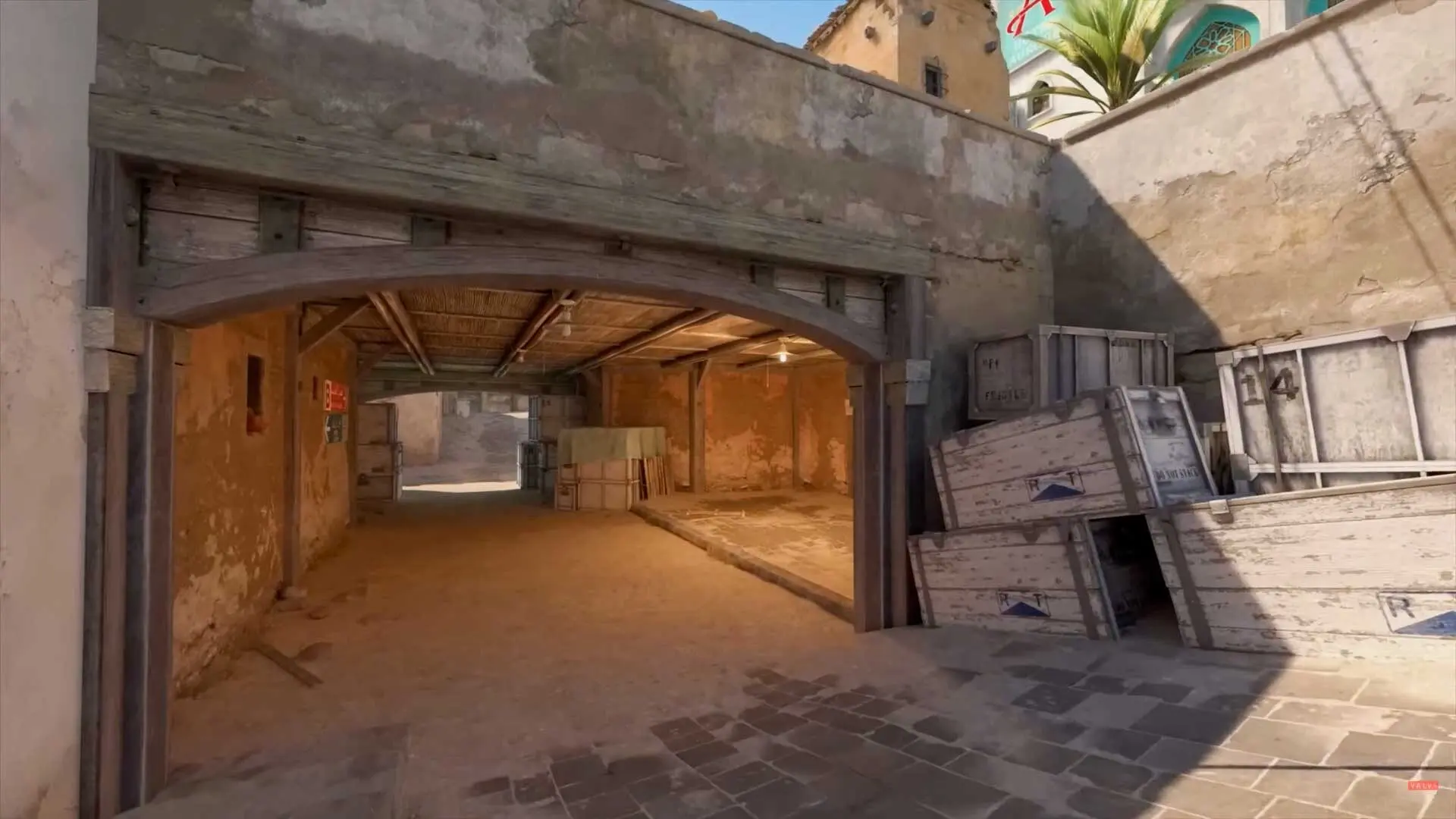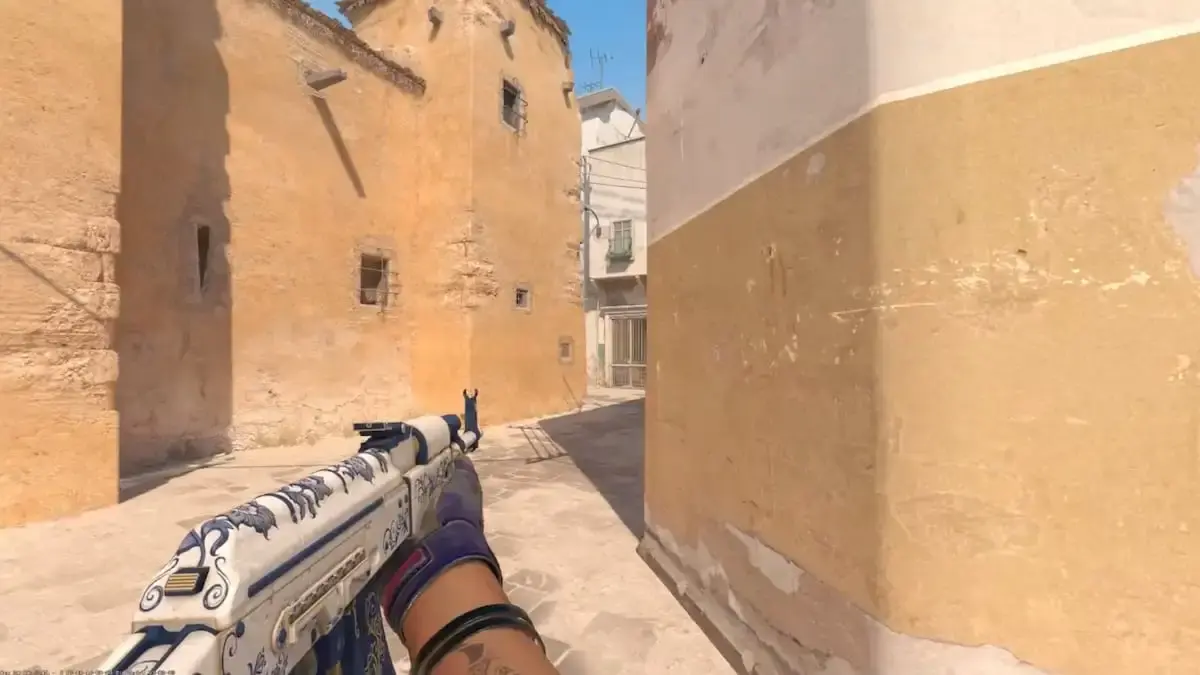
Dust 2
de_dust2, often referred to simply as Dust II, holds a special place in the world of disposal map that succeeded its predecessor Dust. This map has become not just another lCounter-Strike as a bombocation in the series of games, but a true symbol of Counter-Strike, attracting players with its perfect balance and design.
Over time, Dust II has grown into more than just a game map, becoming a favorite battleground for millions of players around the world. Its popularity continues today, making it a frequent choice for both casual games and international tournaments. This is truly a place where tension and strategy meet at every corner.
Basic information about the card
Surely every Counter-Strike player has at least once run across the desert sand in Dust 2. Moreover, each player could do this on completely different versions of the game. Since it was Dust 2 in its current geometric form that was in six different versions of the game, including:
- Counter-Strike
- Counter-Strike Xbox Edition
- Counter-Strike: Condition Zero
- Counter-Strike: Source
- Counter-Strike: Global Offensive
- Counter-Strike 2
The original creator of the map was David Johnston. However, he later sold the rights to this map. But in general, as a result, 4 studios have put effort into the map over the entire period:
- Ritual Entertainment
- Turtle Rock Studios
- Valve Corporation
- Hidden Path Entertainment
But in general, the first mention of Dust appeared in the distant Counter-Strike 1.1! And this version was released on March 13, 2001. But let's go back to modern realities.

Dust 2 map review
Inspired by landscapes reminiscent of the Middle East, Dust II continues the theme of its predecessor. In its original versions, the main design elements were walls painted in sandstone shades and sand floors, creating a minimalist but recognizable look.
As the series of games developed, the visual design of the map became more detailed and rich, better conveying the atmosphere of the scene. The Global Offensive version of the game introduces elements typical of Islamic architecture, as well as signs of military activity, including destroyed walls and military equipment, reflecting a modern understanding of the Middle East.

However, in its latest incarnation, the map takes inspiration from Morocco, which is located outside the Middle East but has a similar architectural heritage, adding new colors and textures to the map.
The map structure is designed in such a way that it offers three key routes: tunnels connecting the terrorist spawn point to point B, a central area connecting them to the counter-terrorist base via catwalk, and a long corridor leading to point A. These main paths intertwine with many additional passages, providing a rich selection of tactical options and maneuvers for players, making each rink on Dust II unique and memorable.
Locations on the map
The counter-terrorist spawn point is under the roof, not far from the footbridge. They can immediately go to point A to defend against attacks from terrorists coming through the bridge and the long route, or they can go through the central gate to guard point B from attacks coming from the tunnels.
The terrorists start the game at the top of the central passage. They have a choice: advance towards the tunnels to attack Point B, head through the doors of the long passage to attack Point A from that side, go down the central passage, risking being noticed by the counter-terrorists due to the open space known as "Suicide" , or take a less dangerous path to the central passage and bridge.
Point A is connected to the terrorists' spawn point, a long route and a bridge. This is a place with two levels and several hiding boxes in the center of the point.

Point B has a connection to the tunnels and the middle part of the map on the counter-terrorist side. It is accessed through double doors and a raised opening called the Window. The area is abundantly dotted with boxes, which serve as cover for counter-terrorists defending the point from attacking terrorists.
The tunnels provide a link between point B, the terrorist spawn point, and the central part of the map. This area is completely closed, blocking access to grenades. It is divided into two sections by a spiral staircase known as Upper and Lower B, with Lower B connected to the central area and Upper B leading directly to Point B. Scattered crates provide some cover.
Mead is a long corridor running through the middle of the map and connecting the main points of interest. This corridor is divided into two paths: one inclined, leading from the Suicide and Terrorist spawn to the Counter-Terrorist spawn through a large, partially open gate known as the Central Gate, and also connecting to the Lower Tunnels.
Short is a short 90 degree turn at the end of the flat section of the central aisle. It directly connects to the upper area of the A point (known as Short A as opposed to Long A) after climbing the stairs.

The Long Route (or Long A) is a spacious path that is openGives terrorists direct access to point A. On their side there are double doors that must be passed through to enter. After entering the long passage, a large blue trash can provides cover, and a pit at the terrorist end of the long passage offers cover for counter-terrorists while defending, or for terrorists when sniping along the long passage.
Official description
The task for the counter-terrorist team is to prevent explosions of warehouses where boxes of chemical ammunition are stored, organized by terrorists. They must neutralize any explosive devices aimed at critical areas.
On the other hand, the terrorists have to complete a mission to destroy at least one of the chemical weapons arsenals using C4 explosives.
It is important to note that the map shows two chemical weapons storage sites that will become objects of strategic struggle between the teams.






